- Continue Shopping
- Your Cart is Empty
Alex Lewin's Fermented Carolina Slaw

What You'll Need
Equipment
- measuring cups and spoons
- good kitchen knife and clean cutting surface
- large mixing bowl
- microplane or zester
- cheese grater
- mandoline slicer (optional)
- 1/2 gallon mason jar
- pickle pipe or jar top fermentation kit
- pickle weights
- strainer
- canning funnel
- 8oz or 1/2 pint jar
Ingredients For the Slaw
- 1 pound green cabbage
- 1 large onion (red, yellow, or white)
- 1 large green bell pepper
- 1 large carrot
- ½ apple (optional)
- ¼ pound celery root, or 1 teaspoon celery seed
- 4 teaspoons sea salt
For the Dressing
- ¼ cup honey (or less, if you have included an apple)
- 6 tablespoons oil (a mixture of sesame, coconut, and olive oils works well)
- 2 teaspoons dry mustard
- 1 piece (1⁄3 inch) ginger root, peeled and grated (optional)
- Freshly ground black pepper
Carolina Slaw hails from …wait for it…the southeastern United States. Our friend Alex Lewin speculates that modern-day Carolina Slaw, soured with vinegar, is directly descended from an older type of cabbage slaw, soured instead by the action of friendly lactobacillus bacteria. Before the advent of refrigeration, fermentation would have been the only way to preserve cabbage in the warmer months. We appreciate very much, this old-timey fermented recipe for a coleslaw/sauerkraut hybrid creation, the perfect foil to barbecue in California, Carolina…and beyond!
Thanks, Alex, for sharing this recipe with us, and with the world, in your book Real Food Fermentation: Preserving Whole Fresh Food with Live Cultures in Your Home Kitchen, and for visiting us in the greenhouse to make this super tasty probiotic slaw. There were no leftovers.
Please note that the total fermentation times for this recipe are up to you, dear reader. While we often ferment sauerkraut for 2 or 3 weeks, this slaw is most delicious when it is a bit crunchier, perhaps less sour than a finished 3 week kraut. Alex recommends 4-7 days of fermentation before serving it up as slaw, with the additional ingredients. Use your discretion, but if you want that crunchy “slaw” texture, keep the fermentation times at less than a week.
Yield: 1 quart or 2 pounds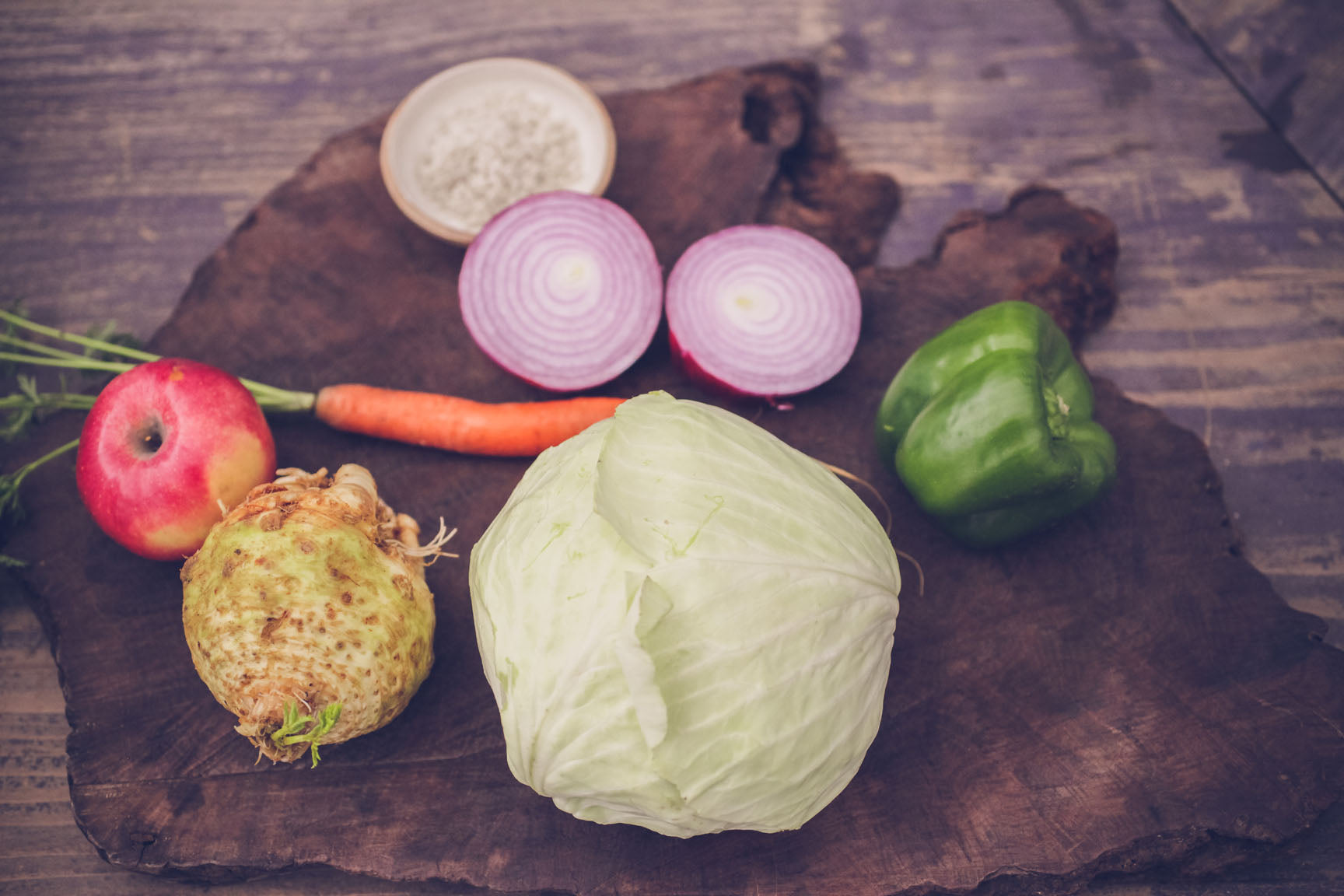
Directions
Thinly slice the cabbage, onion, and bell pepper. 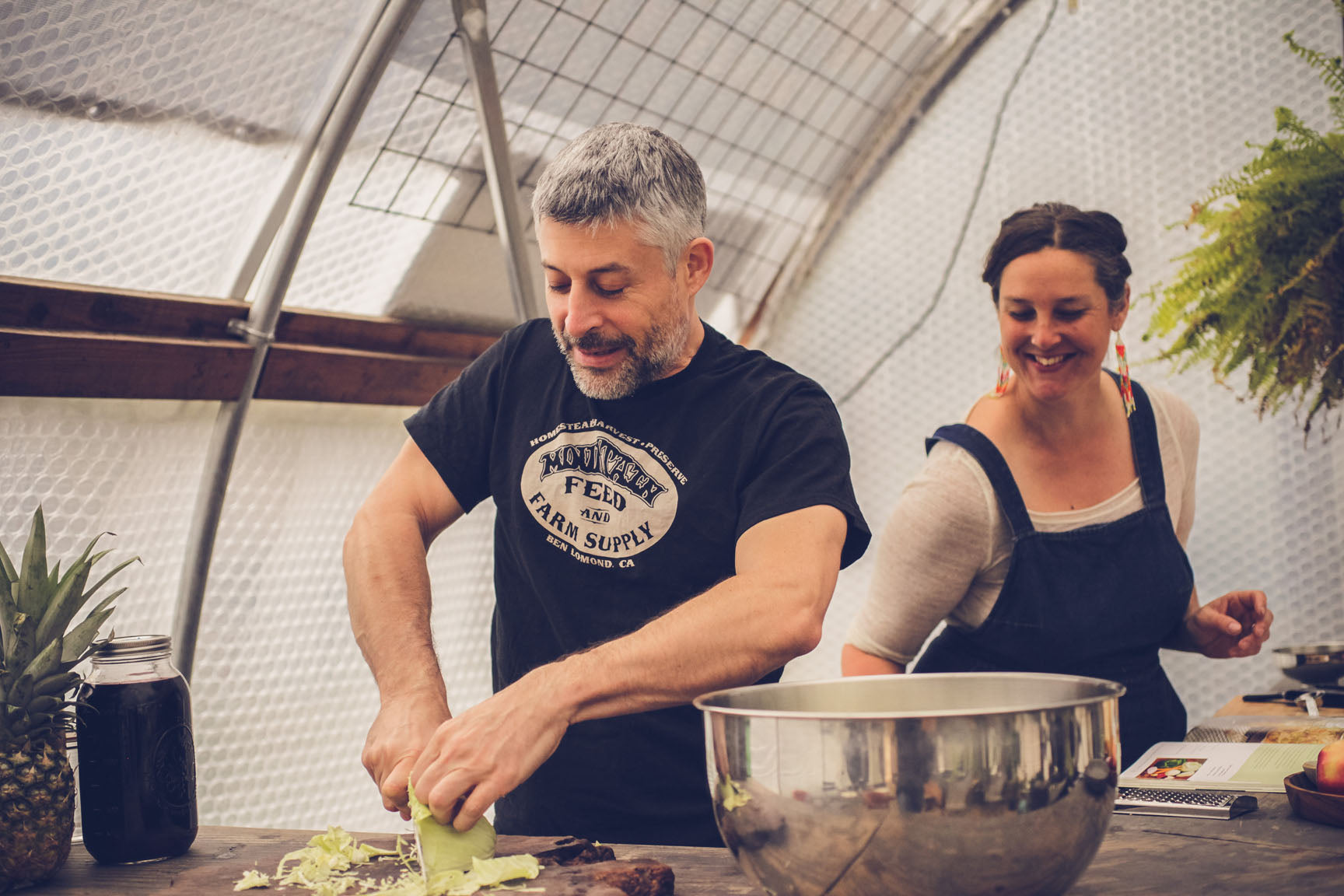
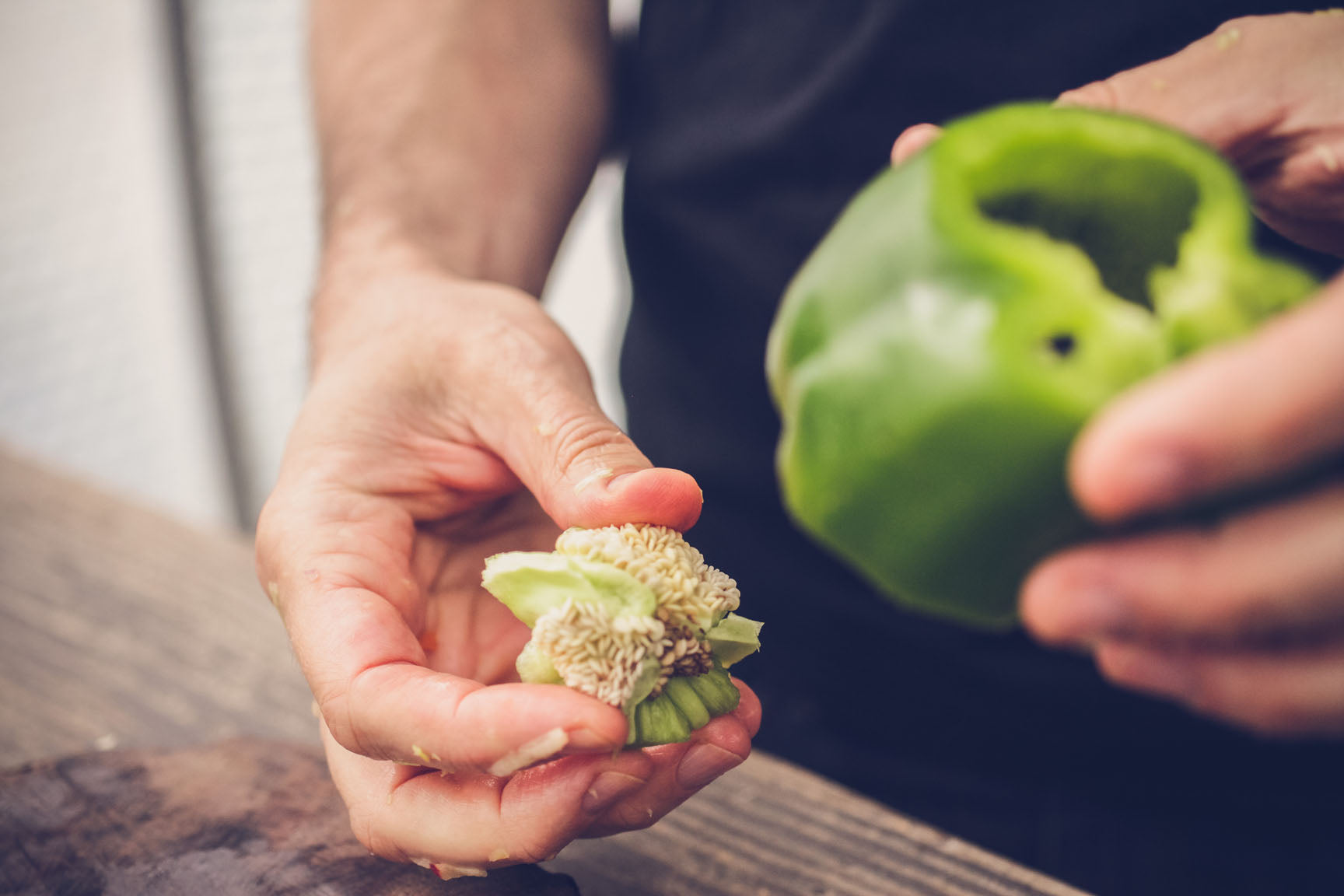 Cut the carrots into coins.
Cut the carrots into coins.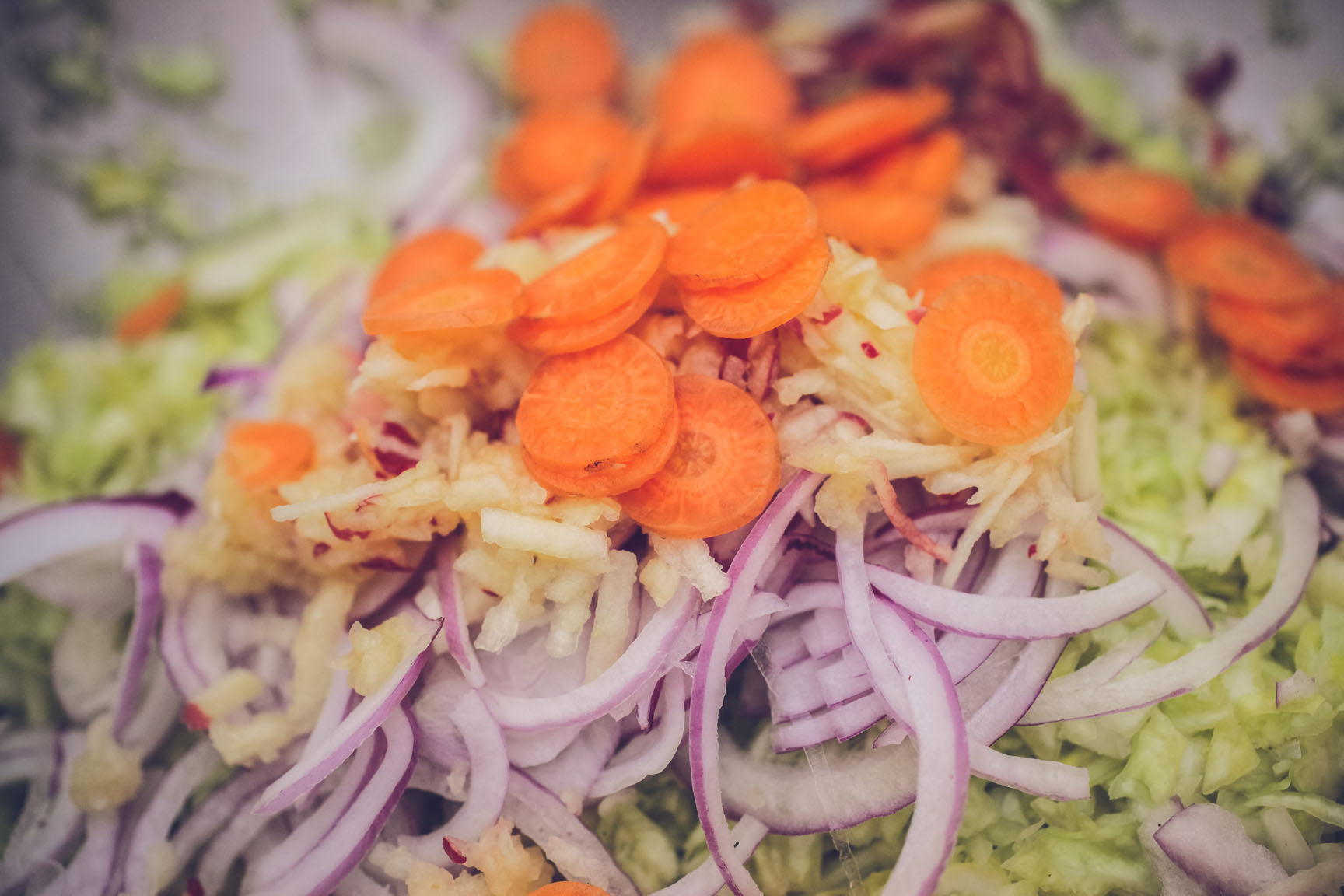 Grate the apple (if using), and celery root (if using).
Grate the apple (if using), and celery root (if using). 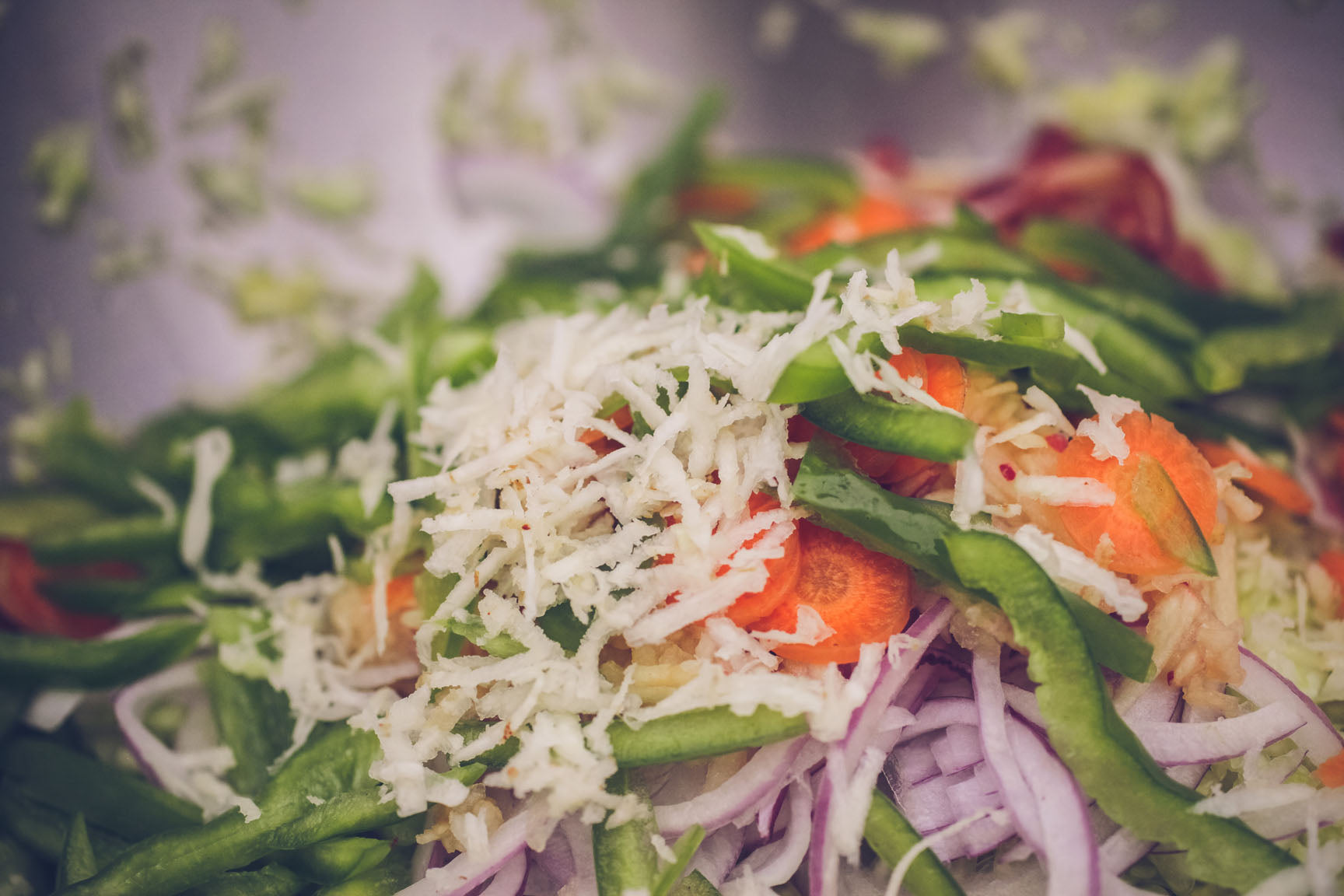
In a large bowl, sprinkle the cabbage with sea salt and toss well. 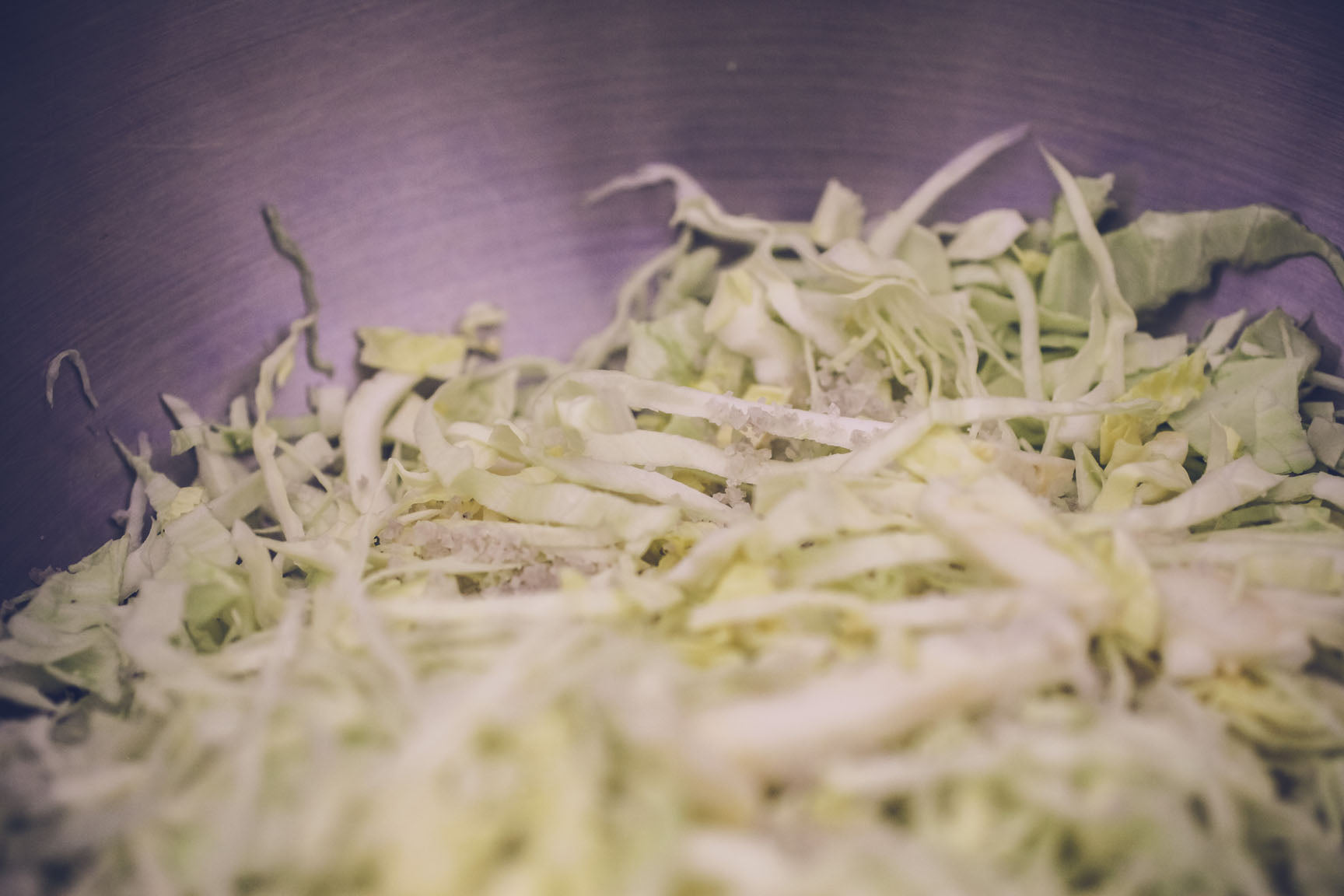 Allow the mixture to stand for 10 minutes, then gently massage cabbage until a light brine forms.
Allow the mixture to stand for 10 minutes, then gently massage cabbage until a light brine forms. 
Add the peppers, onion, apples, and celery root and toss to combine. Pack the vegetable mixture into a mason jar, pressing firmly down to remove air bubbles and keep the brine level above the surface of the vegetables.
Pack the vegetable mixture into a mason jar, pressing firmly down to remove air bubbles and keep the brine level above the surface of the vegetables.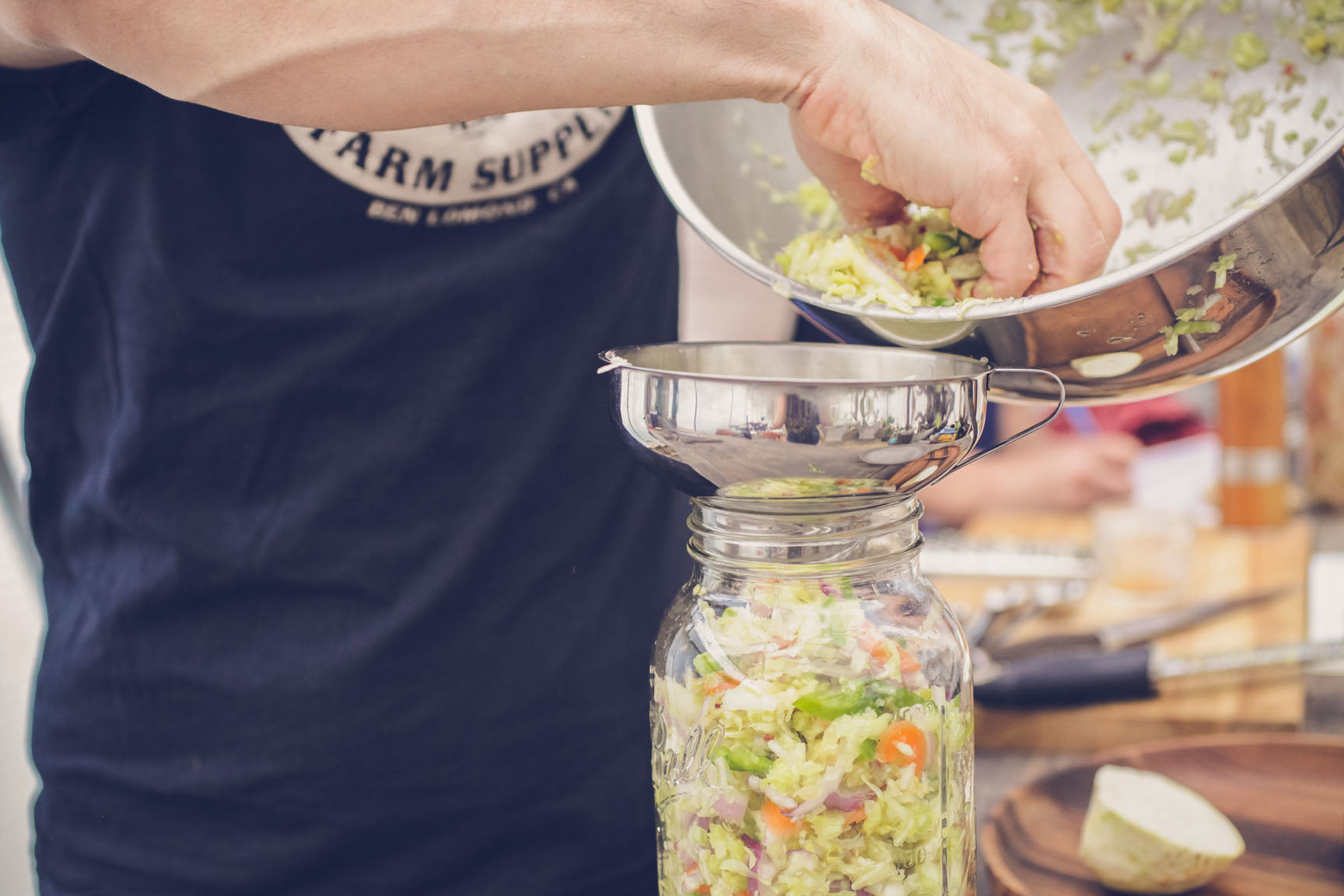 Secure the top of the jar with a fermentation airlock and set on the counter to ferment at room temperature, out of direct sunlight, for about a week, or until the desired level of sourness is reached.
Secure the top of the jar with a fermentation airlock and set on the counter to ferment at room temperature, out of direct sunlight, for about a week, or until the desired level of sourness is reached. 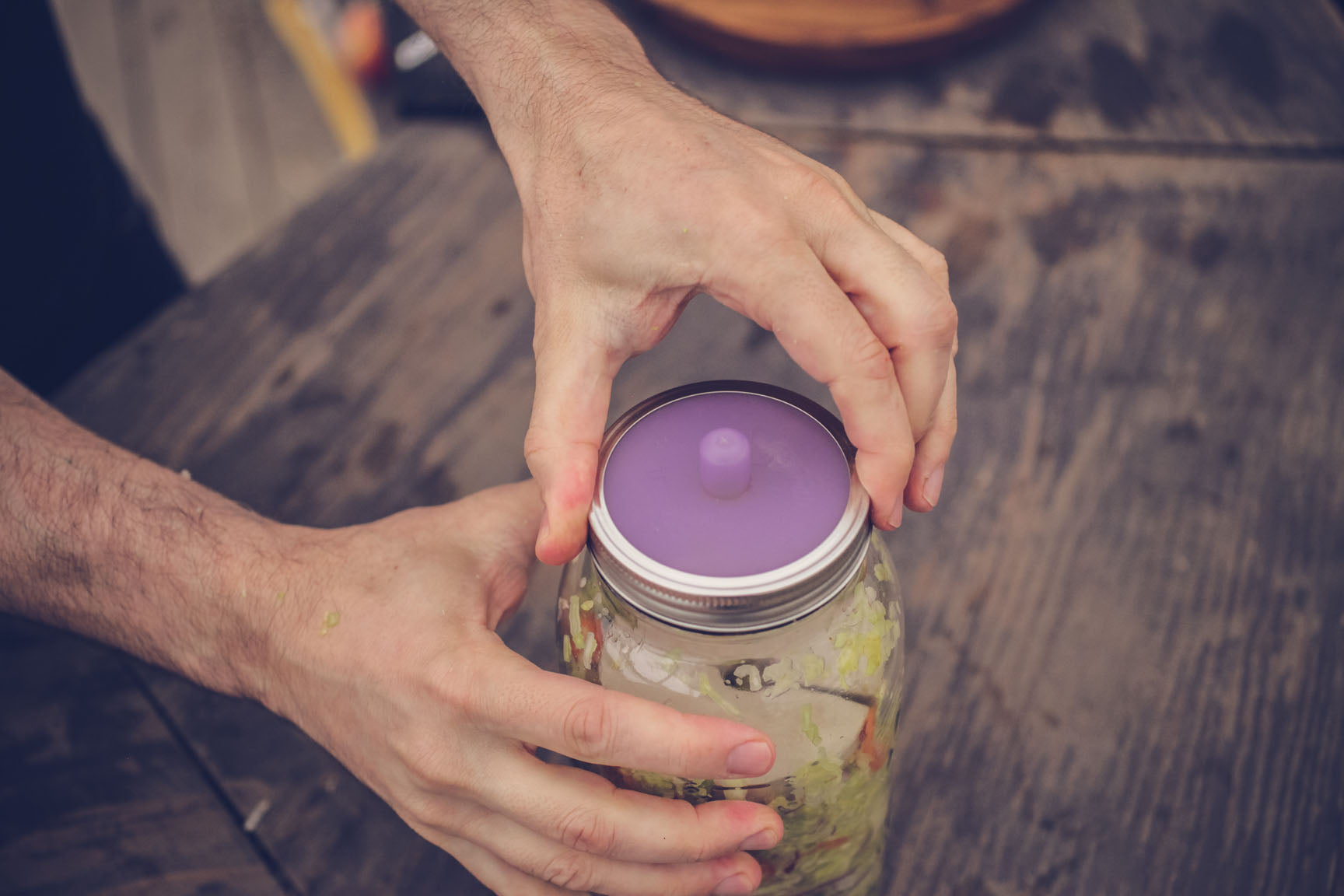 Once the vegetables are fermented, drain them in a colander set over a mixing bowl and press the liquid out with your hands, reserving the liquid.
Once the vegetables are fermented, drain them in a colander set over a mixing bowl and press the liquid out with your hands, reserving the liquid. 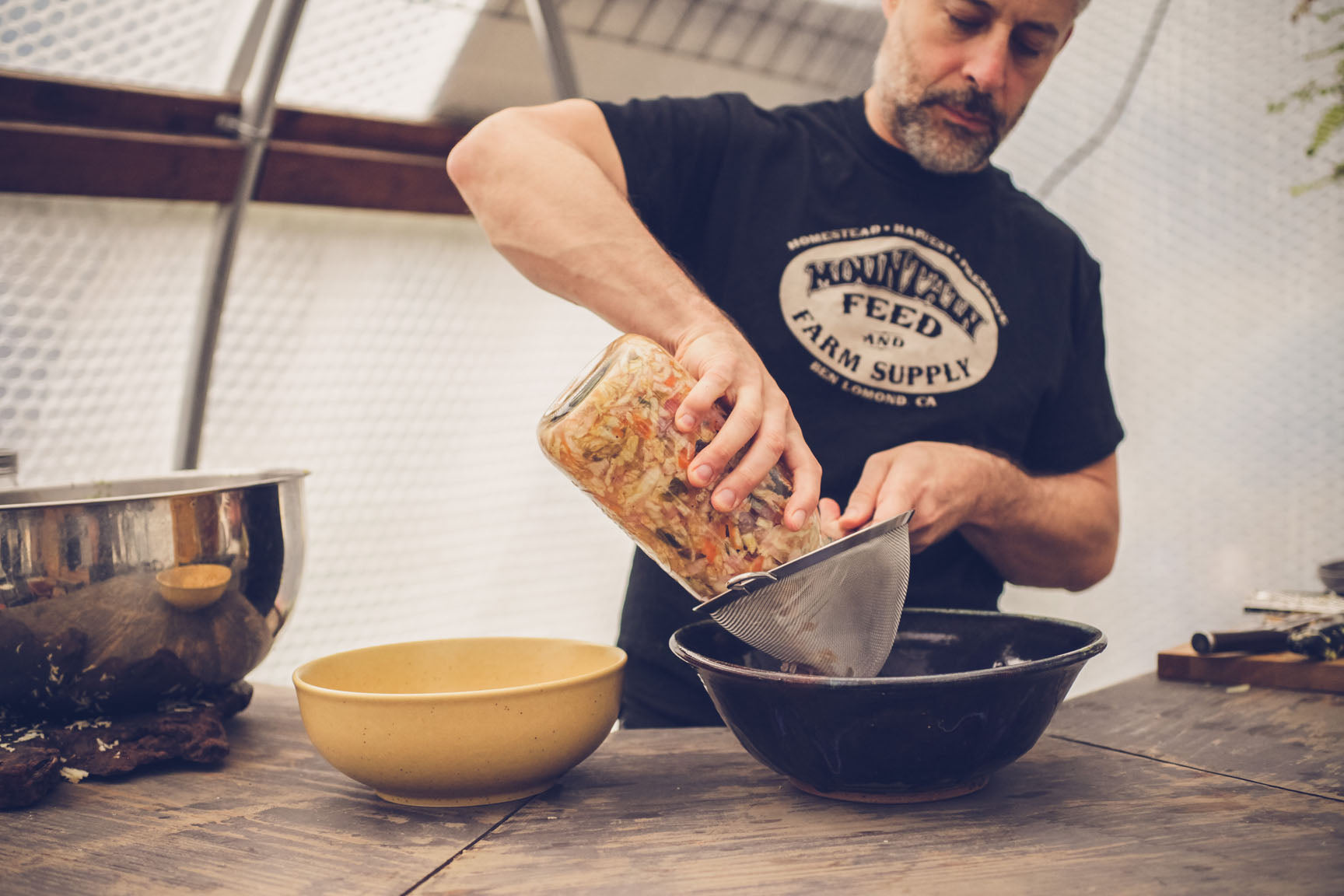
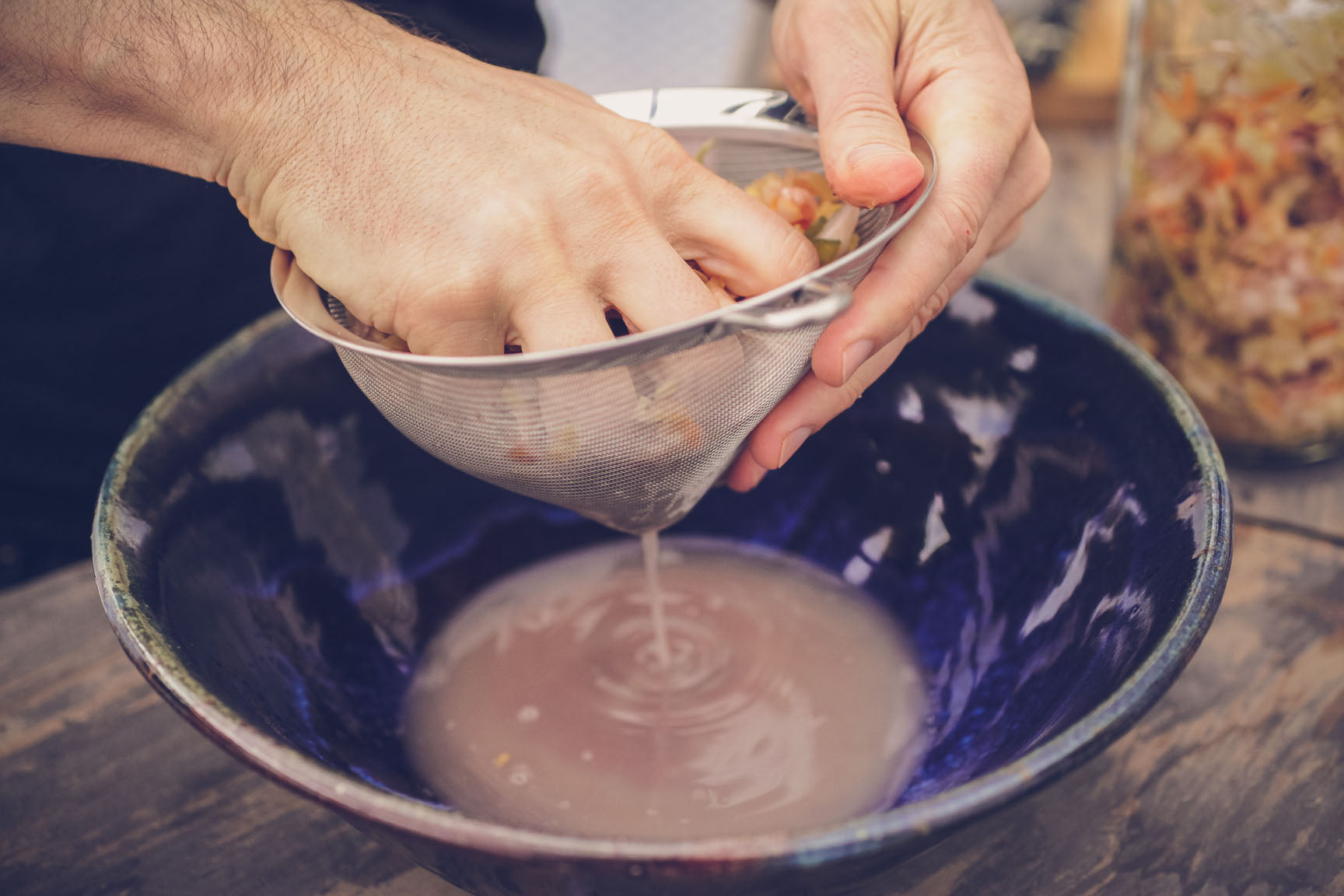
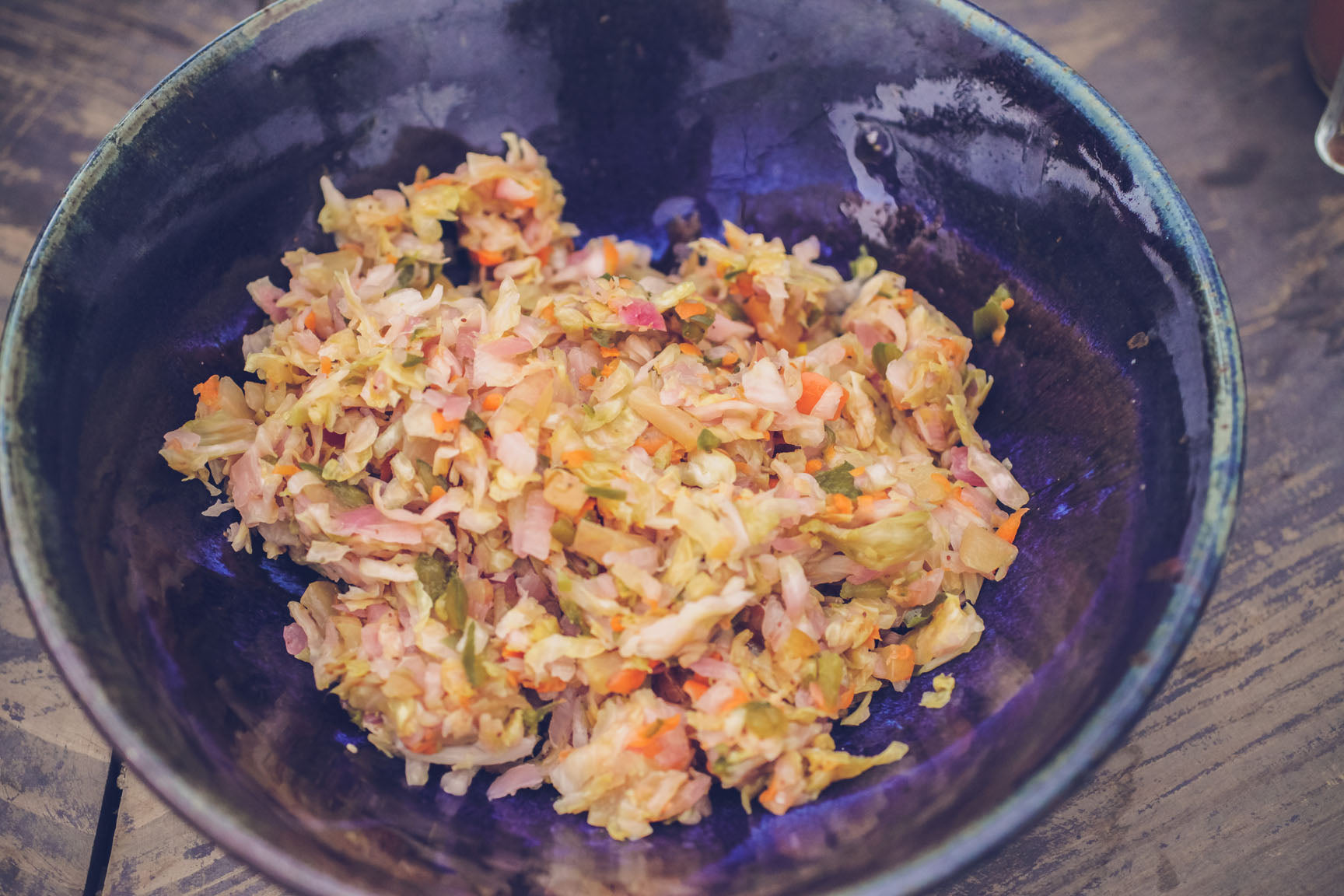 To make the dressing, combine ½ cup of the reserved liquid with the honey, oil, dry mustard, and ginger, and whisk well. Add salt and pepper, or additional kraut liquid as needed.
To make the dressing, combine ½ cup of the reserved liquid with the honey, oil, dry mustard, and ginger, and whisk well. Add salt and pepper, or additional kraut liquid as needed. 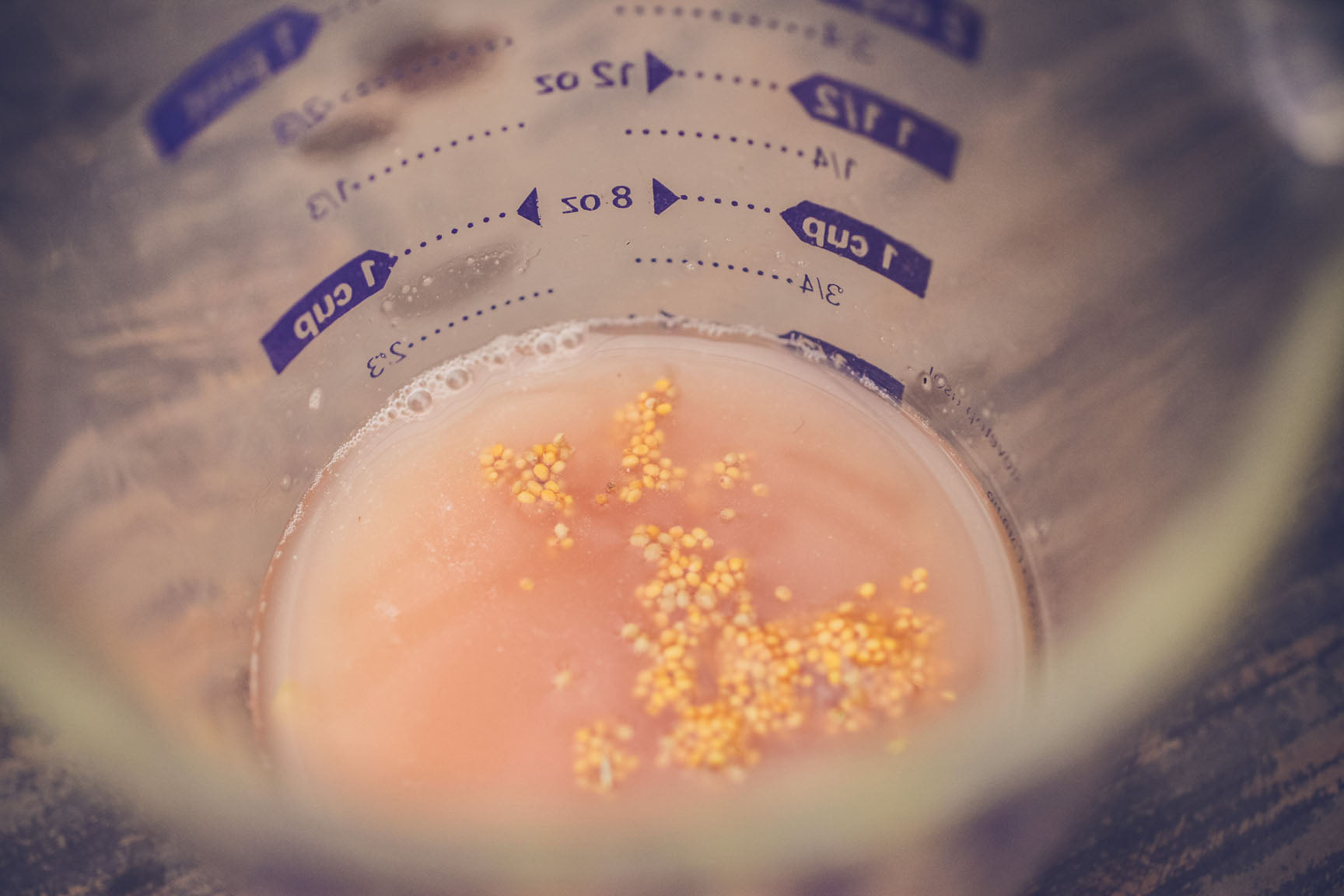
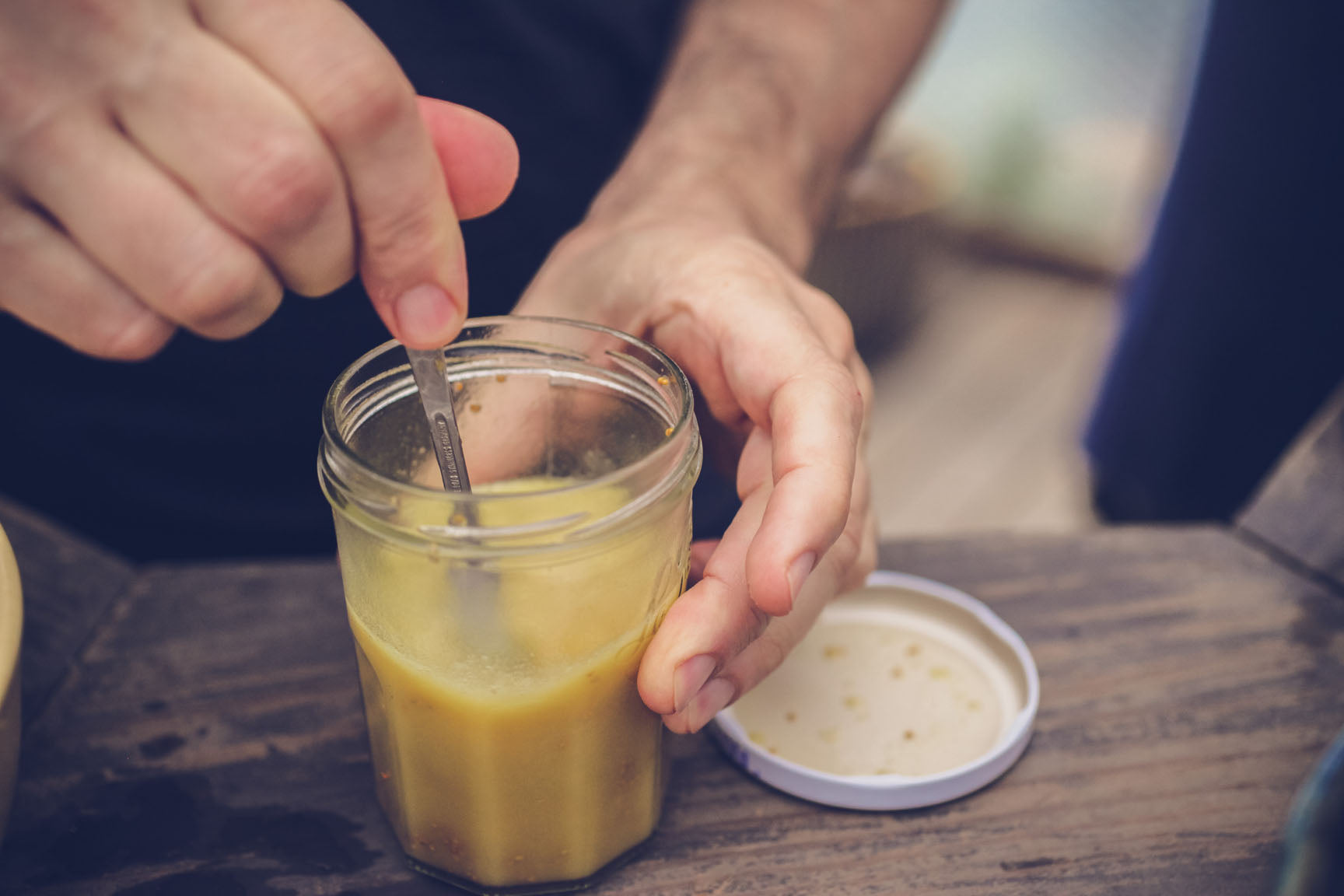 The leftover fermentation liquid can be saved to mix with oil and spices to use as a salad dressing. It’s also excellent all by itself, as a shot in the morning, or before meals, to stimulate digestion.
The leftover fermentation liquid can be saved to mix with oil and spices to use as a salad dressing. It’s also excellent all by itself, as a shot in the morning, or before meals, to stimulate digestion.
Mix the dressing into the slaw mixture to taste and season with salt and pepper if desired. 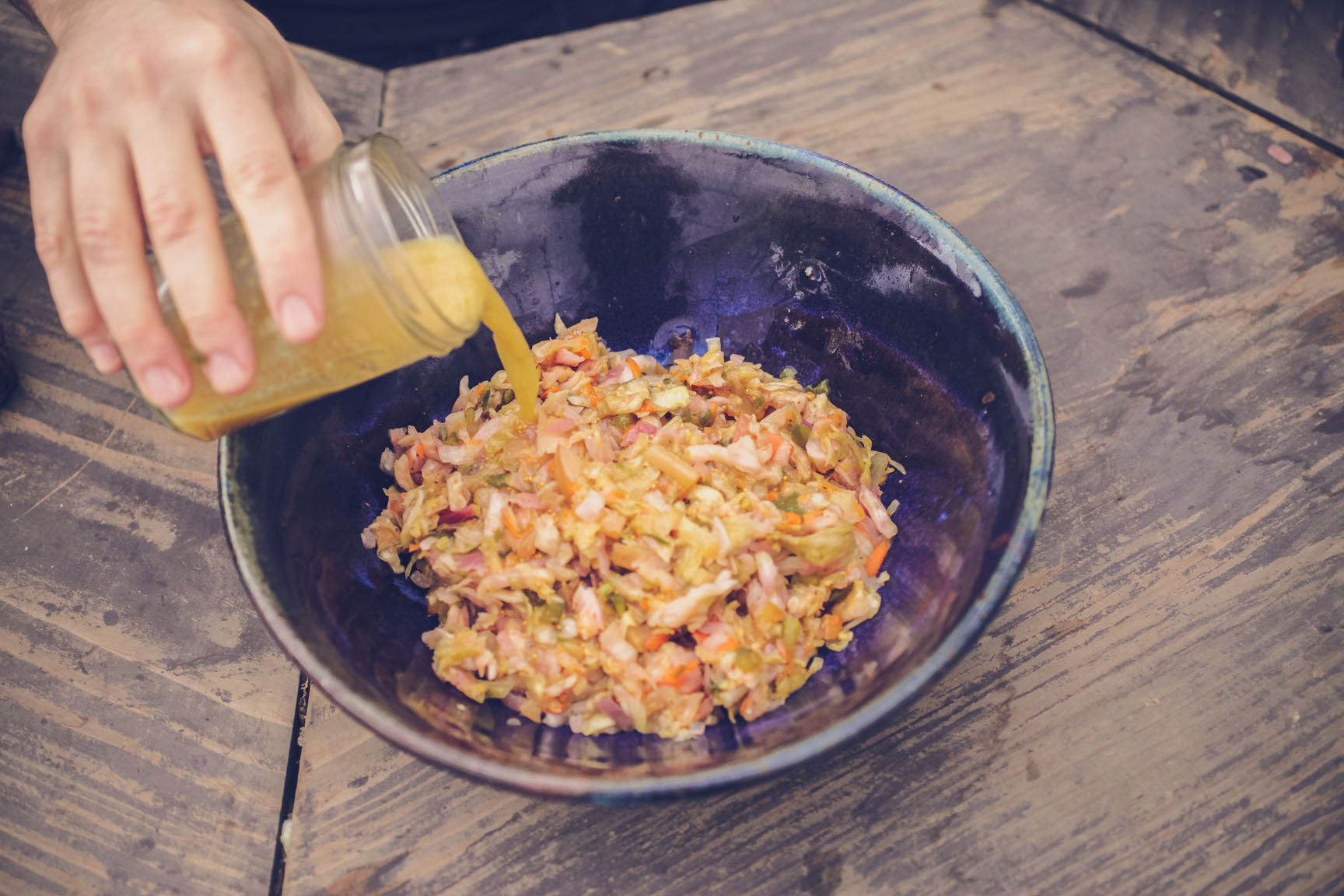 Serve at room temperature.
Serve at room temperature. 
Over to You
It’s part of our mission here at Mountain Feed to help you make delicious, sustainable, homemade food more often. Stop by and say hello on Facebook, Twitter, Instagram or Pinterest. Or, as always, you can do it the old-fashioned way and come by the store to speak with one of our in-house experts.
